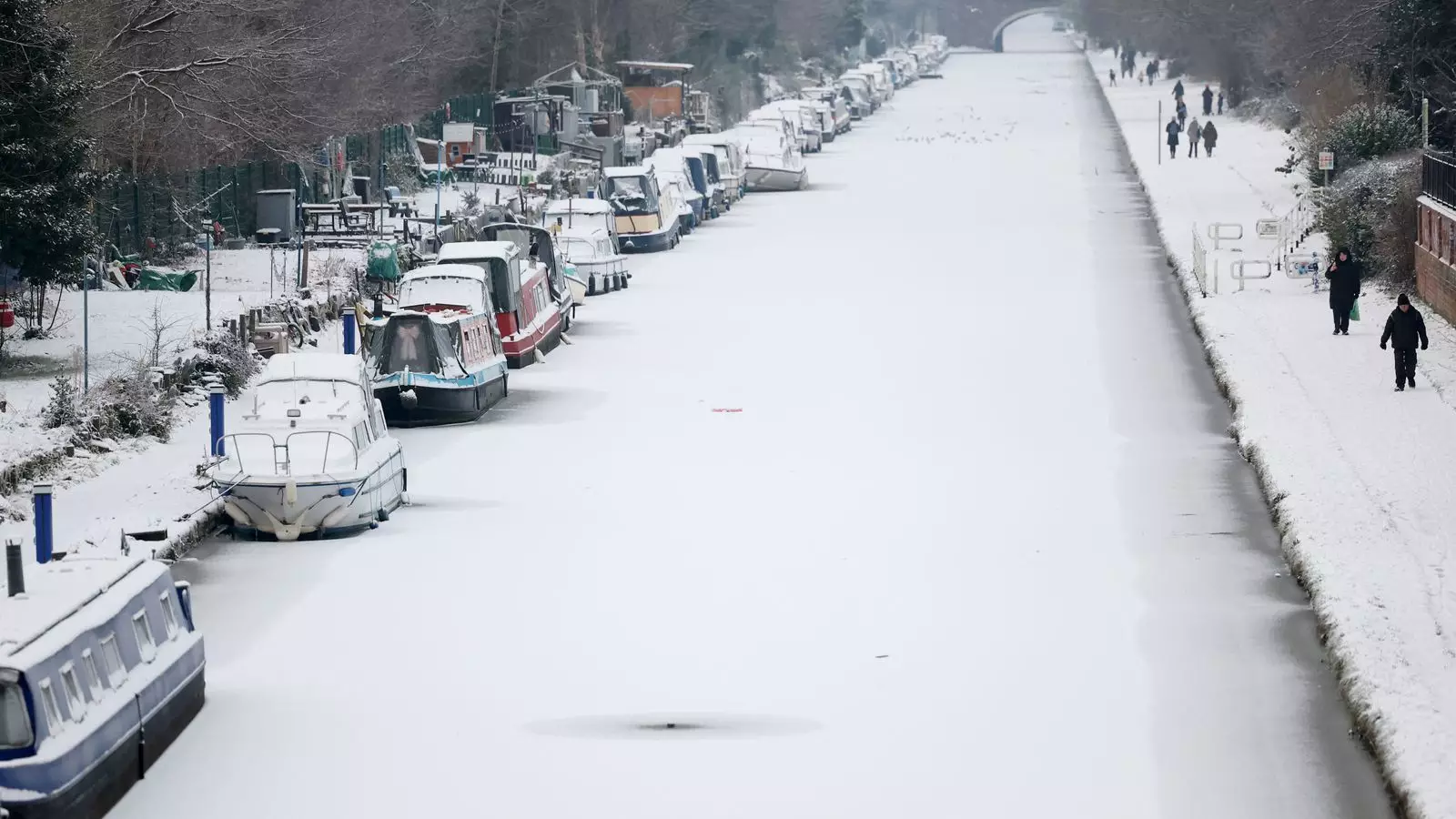The UK is currently facing severe winter weather, as the Met Office has issued yellow warnings for snow and ice from Thursday afternoon onward. Initially, various warnings were set to expire early on Thursday, with a single warning for Scotland remaining in place until midnight. However, the situation escalated, prompting updates and extensions to these warnings that now cover vast regions, including the Midlands, North West England, Eastern England, Wales, and Northern Ireland. These warnings are in effect from 4 PM on Thursday until 10 AM on Friday, indicating that icy conditions will persist and require caution.
In addition to the widespread snow and ice warnings, Scotland’s alert has also been prolonged until Friday morning, highlighting the persistence of hazardous conditions across the northern part of the country. Another yellow warning specifically for ice will be enforced starting from 3 AM on Friday until 11 AM, which includes regions of South West England and parts of South Wales. These alerts signal serious disruptions as freezing temperatures threaten to reach lows of -16°C in northeastern England and Scotland, leading to potentially treacherous conditions for residents and travelers alike.
Impact on Transportation and Infrastructure
As the country grapples with these severe weather conditions, transportation services, including airports and roadways, are feeling the strain. Manchester Airport faced significant operational challenges due to heavy snowfall, leading to the temporary closure of its runways. Operations resumed around 10 AM on Thursday, although delays for both departures and arrivals remained likely due to the backlog created by the earlier suspension. The airport stressed the priority of passenger safety amidst challenging circumstances, thanking travelers for their patience during this disruption.
In addition to the airport troubles, various roads have encountered serious obstructions. The A30 in Cornwall was closed in a westbound direction following a multiple vehicle collision caused by icy conditions. National Highways reported that emergency responders were on-site while traffic became severely congested. Police in the region warned motorists of potential lengthy delays and advised that roads could be impassable for extended periods.
The overall atmosphere of uncertainty permeates across many transport networks due to the yellow warnings, which indicate the potential for injury from slips and falls alongside disruptions to travel. With forecasts indicating continuing icy conditions, road users are strongly advised to use caution and prioritize well-gritted main roads whenever possible.
Public and Emergency Responses
As icy conditions persist, emergency services have ramped up their responses to the increased demand for assistance. The RAC, a major UK car insurance provider, noted that they experienced the highest number of rescue requests within a three-day period since December 2022, highlighting an alarming trend corresponding with the unprecedented winter weather. This surge in demand reflects the dangers that have arisen from the inclement climate, as motorists encounter accidents and breakdowns exacerbated by the treacherous road conditions.
The emphasis on safe travel is crucial during this period, especially within regions under yellow warnings. Overall, the guidance from authorities is clear: individuals should remain vigilant, heed travel advisories, and exercise caution while commuting or engaging in outdoor activities.
The ongoing and anticipated winter weather challenges across the UK emphasize the need for preparedness. Communities are urged to be mindful of their local conditions as these weather patterns unfold. As the Met Office continues to monitor and update warnings, both the public and local agencies must remain aware of potential hazards and ensure safety in all situations. Given the significant disruptions already witnessed, it is vital to stay informed and cautious, adapting to the unpredictable nature of winter weather while prioritizing safety at all times.



Leave a Reply